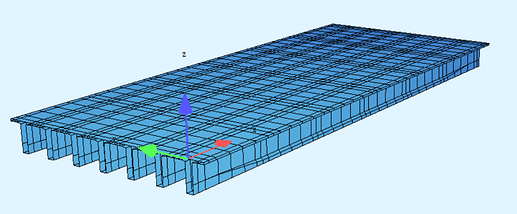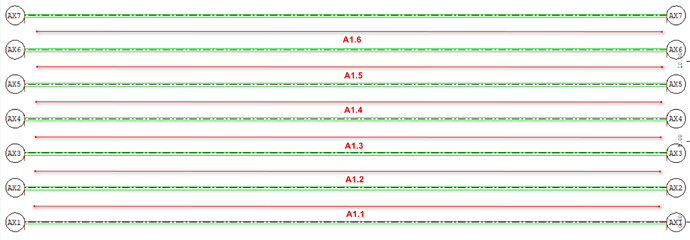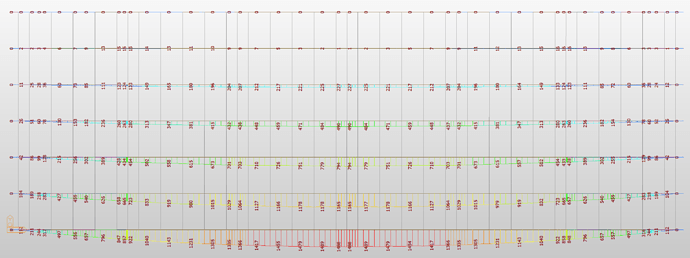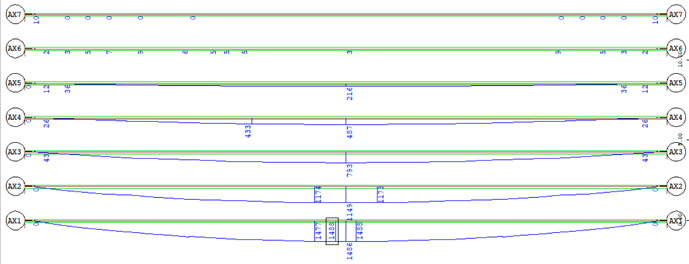The structure is composed of 7 girders (as shown in the image below), the girders are connected in the transverse direction with transverse beams. It’s a symmetrical structure with symmetrical boundaries.
The same, six traffic lanes (A1.1~A1.6) are added as shown in the picture, they are in the mid-way between their neighbouring girders.
The same moving load applies on these lanes.
So I expect that
For moving load on A1.1 or A1.6, the moment diagrams are symmetrical about AX4, which means moment on AX1 due to load on A1.1= moment on AX7 due to load on A1.6
moment on AX2 due to load on A1.1= moment on AX6 due to load on A1.6
moment on AX3 due to load on A1.1= moment on AX5 due to load on A1.6
The above moment diagrams can be shown by results from Midas Civil
Moving load on A1.1
Moving load on A1.6
Results from Sofistik
Moving load on A1.1, the results are almost identical to those from Midas Civil
Moving load on A1.6, the results are much smaller, WHY?
Model files
AQUA.dat (4.1 KB)
ASE.dat (69 Bytes)
ELLA.dat (1.3 KB)
Moving Load.dat (106 Bytes)
SofiLoad.dat (758 Bytes)
SofimshC.dat (49.9 KB)






